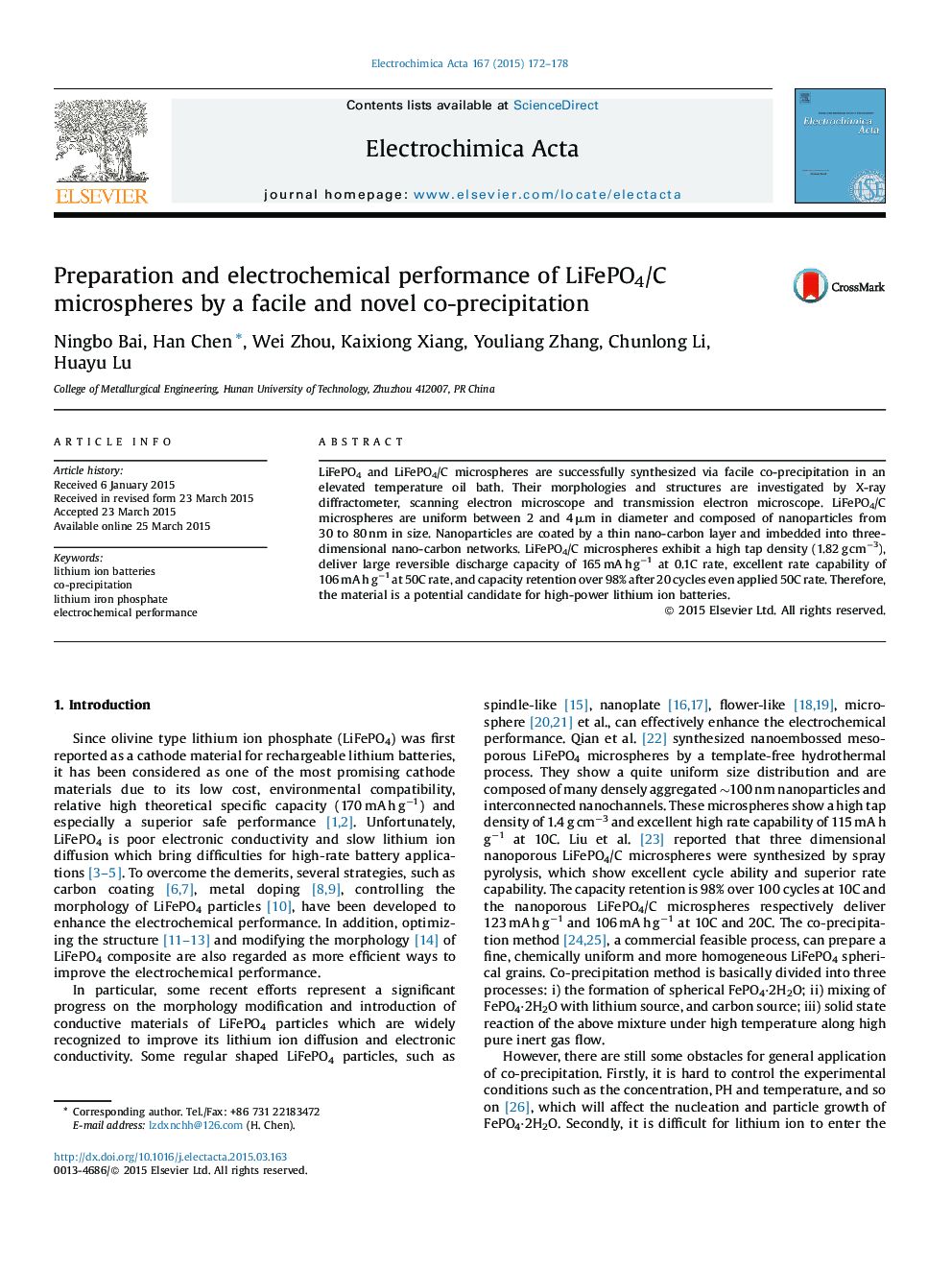| Article ID | Journal | Published Year | Pages | File Type |
|---|---|---|---|---|
| 184339 | Electrochimica Acta | 2015 | 7 Pages |
•LiFePO4/C microspheres are synthesized via a facile co-precipitation in an elevated temperature oil.•PVA acts as a binder in co-precipitation reaction to restrain the free split of the droplets and promote the formation of uniform spherical precursor.•LiFePO4/C microspheres are composed of nanoparticles which are coated by a thin nano-carbon layer and imbedded into three-dimensional nano-carbon networks.•LiFePO4/C microspheres exhibit an high tap density (1.82 g cm−3), deliver large reversible discharge capacity of 106 mA h g−1 at 50C rate, and capacity retention rate over 98% after 20 cycles at various current densities.
LiFePO4 and LiFePO4/C microspheres are successfully synthesized via facile co-precipitation in an elevated temperature oil bath. Their morphologies and structures are investigated by X-ray diffractometer, scanning electron microscope and transmission electron microscope. LiFePO4/C microspheres are uniform between 2 and 4 μm in diameter and composed of nanoparticles from 30 to 80 nm in size. Nanoparticles are coated by a thin nano-carbon layer and imbedded into three-dimensional nano-carbon networks. LiFePO4/C microspheres exhibit a high tap density (1.82 g cm−3), deliver large reversible discharge capacity of 165 mA h g−1 at 0.1C rate, excellent rate capability of 106 mA h g−1 at 50C rate, and capacity retention over 98% after 20 cycles even applied 50C rate. Therefore, the material is a potential candidate for high-power lithium ion batteries.
Graphical abstractFigure optionsDownload full-size imageDownload as PowerPoint slide
